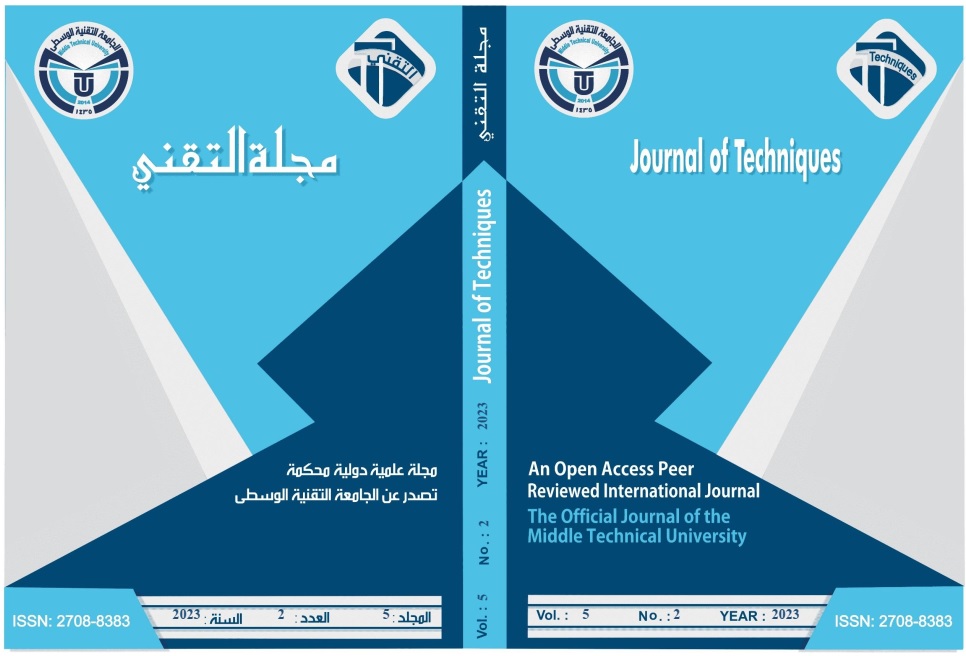Comparison of Some Spatial Regression Models Using Simulation
DOI:
https://doi.org/10.51173/jt.v5i2.598Keywords:
Spatial Regression Models, Spatial Weights Matrix, Least Squares Method, Greatest Possible Method, Mean Squares ErrorAbstract
Breast cancer is one of the most common diseases affecting women in the world as a whole، and the incidence rates differ from one region to another, and this phenomenon can be studied depending on the influence of place and not time، where spatial data is directly affected by a set of influencing factors (age، geographic location، social، economic and reproductive status Intake of hormones، lifestyle risk factors (smoking، diet، obesity، physical activity) and family history that contribute to the disease. In this research، spatial regressive models were used to analyze spatial data for breast cancer and by comparing the estimation between spatial regressive models by Monte Carlo simulation to choose the best estimator between the spatial regressive models. The first model is spatial autoregressive mode and the second A model is the spatial error model and the application of the two estimation methods، the ordinary least squares method، and the maximum likelihood method on the regression models. The method of maximum likelihood method of the spatial auto-regression model is the best according to the difference in the sample size used and the number of explanatory variables.
Downloads
References
F. Raymond and H. Folmer، “Specification and Estimation of Spatial Linear Regression Models ”، Regional Science and Urban Economics، vol. 22، no.3.pp. 405–432،1992.
L. Anselin and H. H. Kelejian،“Testing for Spatial Error Autocorrelation in the Presence of Endogenous Repressors.” International Regional Science Review، vol.20، no.1-2.pp. 153–182،1997.
L. Anselin، H. Folmer، and H.Johan. L. Oud. “W-Based versus Latent Variables Spatial Autoregressive Models: Evidence from Monte Carlo Simulations.” The Annals of Regional Science، vol. 47،no.3.pp. 619–639، 2010.
T. Luzzati، A. Parenti، and T. Rughi، “Economic Growth and Cancer Incidence.” Ecological Economics، vol.146،no.3.pp.381–396،2018.
W. S. Ibrahim، N. S. Mousa، "Estimation of the general spatial regression model (SAC) by the maximum likelihood method"، International Journal of Nonlinear Analysis and Applications، vol.13، no.1،.pp.2947-2957،2022.
L. Anselin، Spatial Econometrics: Methods and Models. The Netherlands، Kluwer Academic: Dordrecht،1988.
P. Legendre، “Spatial Autocorrelation: Trouble or New Paradigm?”، the AAEA annual meetings، Salt Lake City، August، vol. 74، no. 6. pp. 1659–73، 1993.
J. P. Lesage، “An Introduction to Spatial Econometrics”، Ecology، The Ecological Society of America، olv.123،no.3.pp.22-29، 2008.
C.W Kim، T.Phipps & L.Anselin،" Measuring the benefits of air quality improvement: A spatial hedonic approach"، Journal of Environmental Economics and Management، vol. 45، no. 1، pp.2003.
J.P.Lesage، The Theory، and Practice of Spatial Econometrics. Department of the Economics University of Toledo،1999.
K. Ord، "Estimation Methods for Models for Spatial Interaction"، Journal of the American Statistical Association، Vol. 70، No. 349.pp. 120- 126، 1975.
L.Anselin، J. L.Gallo، and H. Jayet. “Spatial Panel Econometrics.”، Advanced Studies in Theoretical and Applied Econometrics، 3rd edn. pp. 625–660،2008.

Downloads
Published
How to Cite
Issue
Section
License
Copyright (c) 2023 Amna Hussein Shawq, Ismail Hadi Globe, Muktar Hussaini

This work is licensed under a Creative Commons Attribution 4.0 International License.
















